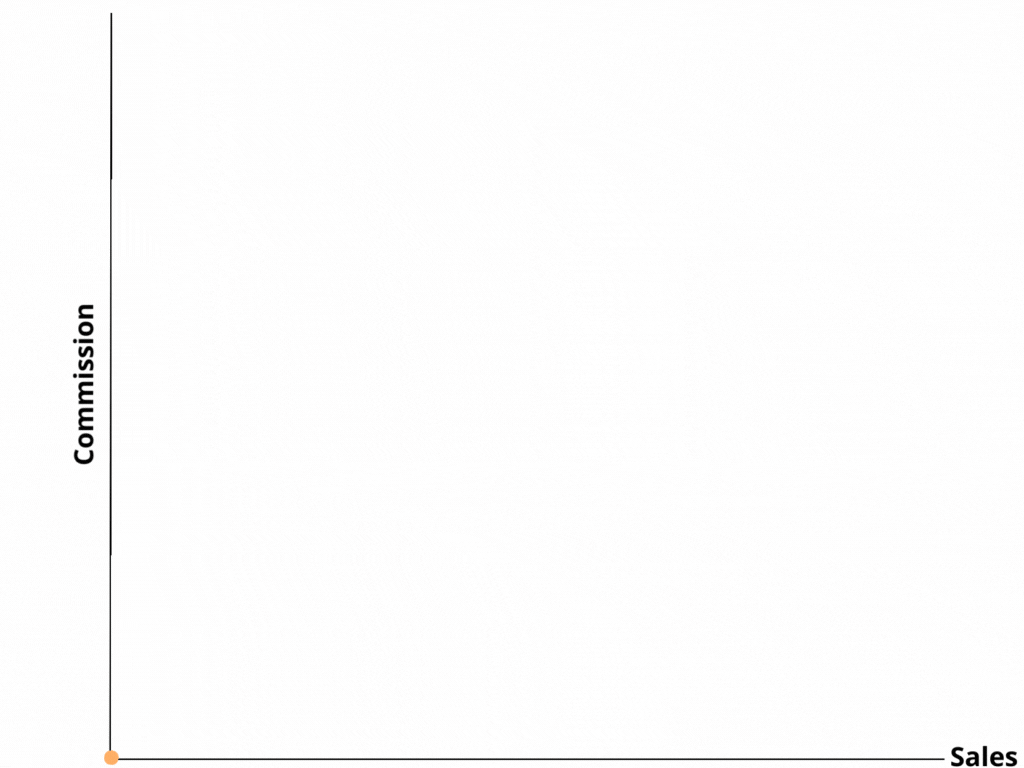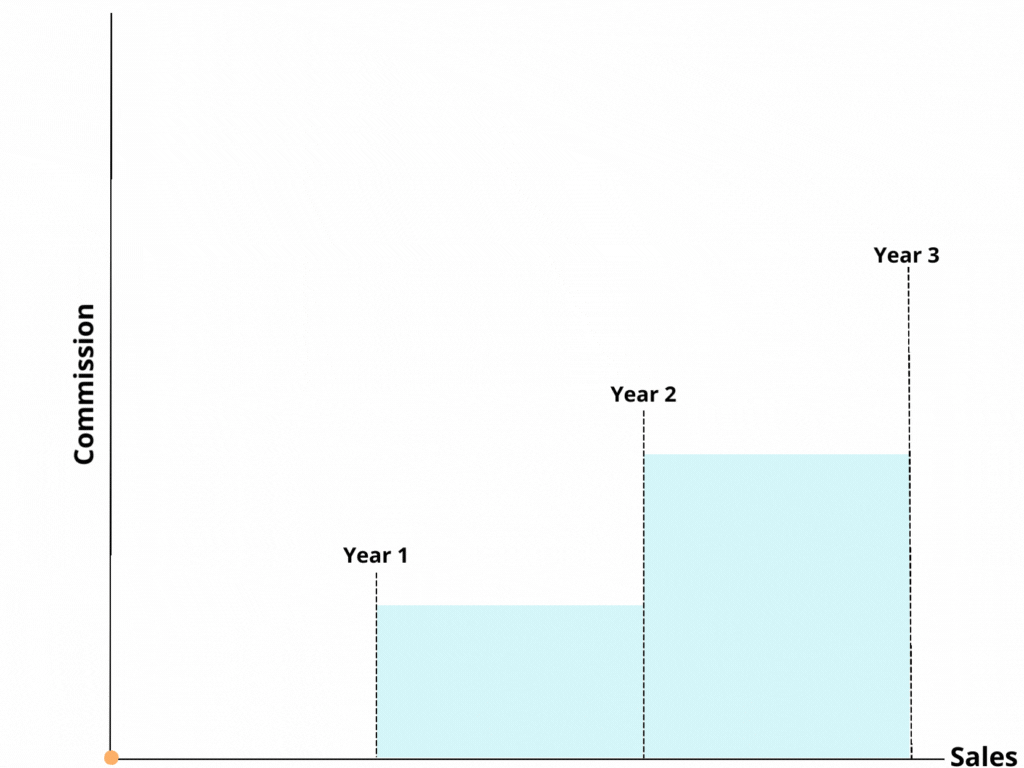Commission Structures: How to Build a Sales Commission Plan That Drives Revenue
Sales Commission Structure
A sales commission structure can be designed to reward and motivate your team by aligning their success with the company's growth. Different structures are designed to encourage sales teams to strive for excellence but also fosters a competitive and dynamic work environment. By providing clear and attainable goals, sales professionals can be empowered to maximize their potential and contribute significantly to our overall success. Learn about different sales commission structures below:
Why Commission Structures Matter
A well-designed commission structure motivates sales teams, improves retention, and aligns incentives with company goals. But with so many options, choosing the right sales commission structure can be challenging. This guide breaks down common commission structures, best practices, and real-world examples to help you build a good sales commission structure that fits your business.
Best Sales Commission Structures by Industry
Before choosing the sales commission structure, it could be beneficial to think about what drives business in your industry, and what matter for your company. A few examples are:
SaaS Sales Commission Structure
- Often includes a recurring revenue component (e.g., percentage of ARR/MRR).
- SDRs (Sales Development Reps) may have an SDR commission structure based on meetings booked.
Roofing Sales Commission Structure
- Typically percentage-based (e.g., 10-15% of the total contract value).
- May include bonus structures for small companies to reward high-volume deals.
Best Sales Commission Structures for Small Businesses
- Hybrid models (base + commission) to maintain cash flow stability.
- Performance-based bonus structures for small companies to retain top performers.
How to Choose a Good Sales Commission Structure
- Align with Business Goals: Drive the right sales behavior.
- Ensure Fairness & Transparency: Clearly define pay scales.
- Balance Competitiveness & Profitability: Avoid overpaying or under-incentivizing.
Commission Structure Examples & Best Practices

Base Salary plus Commission
Base Salary plus Commission is a common sales commission structure used in many sales and performance-driven roles. It combines a fixed salary (the base salary) with additional earnings that are tied to performance (the commission).
Here’s how it works:
-
Base Salary: This is the guaranteed amount an employee earns regardless of their performance. It provides financial stability and ensures that employees have a steady income.
-
Commission: This is the variable portion of the compensation. It is typically a percentage of the sales or revenue that the employee generates. The more sales or revenue the employee brings in, the higher their commission will be.
As commission structures can take many different forms depending on which components are used the visual profile can vary, and all examples below can be combined with a base salary as a guaranteed amount.

Flat-Rate Structure
Flat-rate commission refers to a sales commission structure where a salesperson or agent earns a fixed amount of commission for each sale or transaction, regardless of the sale amount. This means that whether the sale is large or small, the commission earned remains the same.
For example, if a salesperson is offered a flat-rate commission of €50 per sale, they would receive €50 for every sale they make, no matter if the sale is worth €100 or €1,000.
This type of commission structure is simple and predictable, which can be advantageous for both the employer and the employee. However, it may not incentivize employees to pursue higher-value sales since their commission does not increase with the size of the sale. This structure is often used for Sales Development Representatives (SDRs), where they receive a flat-rate commission for every meeting they book.

Tiered Commission
Tiered commission is a sales commission structure where the rate of commission increases as a sales representative reaches certain predefined sales thresholds or targets. This structure is designed to incentivize higher performance by offering progressively higher rewards as sales reps achieve more significant levels of sales.
Example: A sales rep earns:
- 3% on the first $50,000 in sales,
- 5% on sales between $50,001 and $100,000,
- 7% on sales above $100,000.
- $1,500 for the first $50,000 (3%),
- $2,500 for the next $50,000 (5%),
- $3,500 for the last $50,000 (7%),
- Total commission: $7,500.
Tiered commission structures are a powerful way to motivate sales teams to exceed their targets and drive significant revenue growth. By offering progressively higher rewards for higher sales volumes, companies can align their compensation plans with business objectives and foster a competitive, high-performance sales culture.

Accelerated Commission
When using accelerators the commission rates increase after the rep surpasses their sales quota or certain milestones. This sales commission structure rewards high performance.
Illustrative Example:
A sales rep earns:
- A straight percentage-based commission of 4% up to a certain point i.e. €100,000 in sales
- After surpassing €100,000 the target, the commission rate increases to 8% for sales between €100,000 - €120,000.
- When the sales rep moves beyond €140,000 in sales, the commission rate increases to 15%, and so on.
These step-ups in commission rates, such as when the rate leaps from 4% to 7%, are known as accelerators or kickers. They are illustrated by the black tangents displaying the changing steepness of the curve.
Implementing a variety of accelerators, for instance, one based on the sales volume and another on the duration of contracts, is a strategic approach to steer sales representatives towards prioritizing the most beneficial deals.

Straight Percentage-Based Plan
Straight Percentage-Based Commission refers to a sales commission structure where a salesperson earns a flat percentage each sale or transaction, regardless of the sale amount. This means that whether the sale is large or small, the commission share remains the same.
For example, if a salesperson is offered a straight percentage-based commission of 10% per sale, they would receive €50 for a €500 sale.
As for Flat-Rate Commission, this type of commission structure is simple and predictable. Yet, it might not drive employees to seek out larger sales opportunities, as their commission earnings remain constant regardless of the sale's value. However, as the commission is calculated as a share of revenue the company does not risk to lose money if the sales is not big enough to cover commission which is the case for a Flat-Rate Commission.

Quota-Based Plan
Sales reps earn commissions only after reaching a predetermined sales target (quota). This compensation structure drives reps to meet or exceed their quotas.
Here's how it works:
A sales rep has a monthly quota of €50,000 in sales. They earn 5% commission on all sales over €50,000. If they sell $70,000 in a month, they earn 5% on €20,000, which is €1,000.
In this example the quota works as a gate or a condition that needs to be met before sales reps are eligible for commission. This commission structure is often used to reduce risk on a company level and is especially valuable for sales driven organizations with liquidity constraints.
A Quota-Based Commission is usually combined with a lower base salary or guaranteed commission set as a floor to compensate the risk for the sales rep.

Jigsaw Structure
In commission structures, the term "jigsaw" represents a compensation approach where commissions or bonuses are earned based on achieving various components of a sales target, often in a sequential or cumulative manner. This metaphorically illustrates how different performance elements or milestones come together to form the complete compensation picture.
Key Aspects of a Jigsaw Commission Structure:
-
Component-Based Targets: The commission is segmented into various components or stages, each symbolizing a specific target or milestone. Sales professionals must meet these objectives to qualify for their commission or bonuses.
-
Sequential Achievement: Often, the structure requires that each component be achieved in sequence. For example, a salesperson might need to hit certain sales thresholds in different quarters before qualifying for additional incentives.
-
Cumulative Goals: The jigsaw approach may involve cumulative goals, where achieving one target unlocks the potential to earn a commission on subsequent targets. For instance, reaching a €50,000 sales target per quarter qualifies for a year-end bonus.
Overall, the jigsaw commission structure aims to inspire sales professionals by establishing transparent, step-by-step targets that result in higher earnings as they advance, ultimately aligning their actions with business goals and boosting performance.

Capped Commission
Capped commission refers to a commission structure in which there is a maximum limit, or "cap," on the amount of commission a sales representative can earn. Once the sales rep reaches this predefined limit, they can no longer earn additional commissions for that period, regardless of how much more they sell.
Practical Example:
A sales rep earns a 10% commission on all sales. The company has set a commission cap at $50,000 per quarter.
- Q1 Sales: The rep generates $400,000 in sales, earning $40,000 in commission (10% of $400,000).
- Q2 Sales: The rep generates $600,000 in sales, which would normally earn them $60,000 in commission. However, due to the $50,000 cap, they only receive $50,000 for that quarter, and the remaining $10,000 in potential commission is not paid out.
Capped commissions are a tool that companies can use to balance rewarding high performance with managing their overall compensation budget, but they must be carefully structured to avoid negative impacts on sales motivation and overall company culture.

Residual Commission
Residual Commission describes a compensation plan where sales reps earn ongoing commissions for as long as their customers continue to generate revenue. This structure is common in subscription-based or recurring revenue models.
Example:
A sales rep sells a software subscription worth €1,000 per year. They earn a 5% commission annually as long as the customer renews. They earn €50 each year the customer stays subscribed. The next sale will generate a commission on top of the already €50 earned on the first sale.
This incentive model is often combined with other components to incentivize focus on Ideal Customer Profiles (ICPs). The use of residual commission is just as common in compensation plans designed for Marketing and Customer Success as it is for Sales. It is often used to incentivize collaboration between departments and elevate Revenue Operations.
Residual commission is particularly attractive in industries where long-term customer relationships are key to business success. It provides a powerful incentive for salespeople to prioritize not just closing deals but also maintaining and nurturing those relationships.

Flat-Rate Decelerator
A flat-rate decelerator is a type of commission structure used to adjust the earning potential of a salesperson or agent based on their performance. It typically comes into play when salespeople exceed certain sales targets or thresholds.
Initially, a salesperson is awarded a fixed commission per sale, irrespective of the individual transaction's value, ensuring a steady income stream from the get-go. Once a salesperson surpasses a predetermined goal or benchmark, the commission rate begins to taper off, effectively reducing. This strategy aims to regulate expenses, optimize profits, or ensure a fair distribution of rewards.
For example, in a case where a SDR has booked the maximum number of meetings the sales team can handle, the incentive to continue booking meetings diminishes significantly.
Conclusion: Building the Right Sales Rep Commission Structure
Whether you’re designing a SaaS sales commission structure, a roofing sales commission structure, or looking for the best sales commission structures for your industry, the key is alignment—matching incentives with company growth.
Components are perfect to customize Variable Compensation
Understanding components such as accelerators, decelerators, caps, triggers, etc. can be confusing
That is why we have created a glossary for you to grasp a better understanding of the acronyms and expressions commonly used within compensation management.
Get Started with Bentega: Simplify Your Commission Structures
Designing the right sales commission structure can be complex, but Bentega makes it easy. Our platform helps you automate commissions, track performance, and ensure accuracy—so you can focus on growing your business.
Ready to optimize your commission plans?
Looking for expert guidance on building a high-performance sales commission structure? Contact us for insights into common commission structures, tiered models, and bonus structures for small companies to boost your sales team’s success.
Commission Structures simplified | Bentega